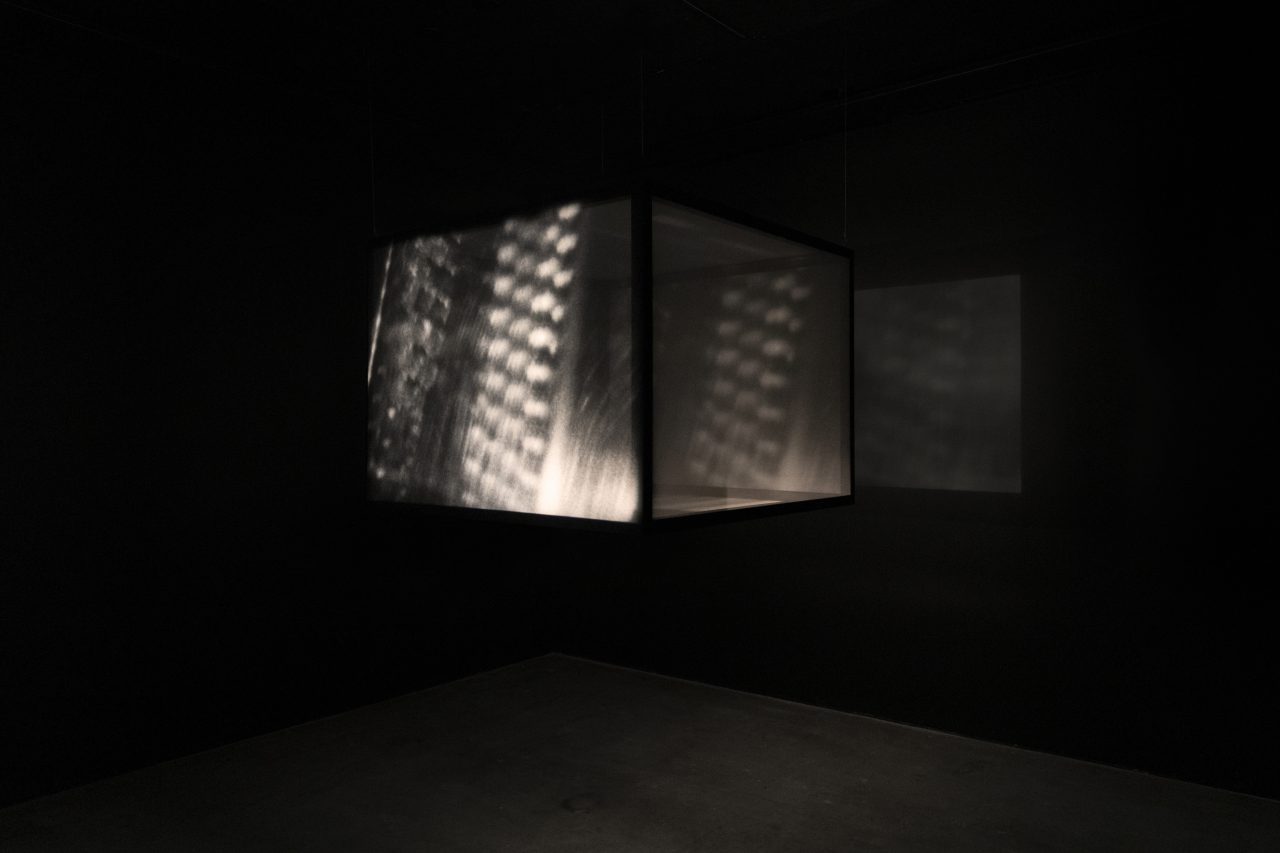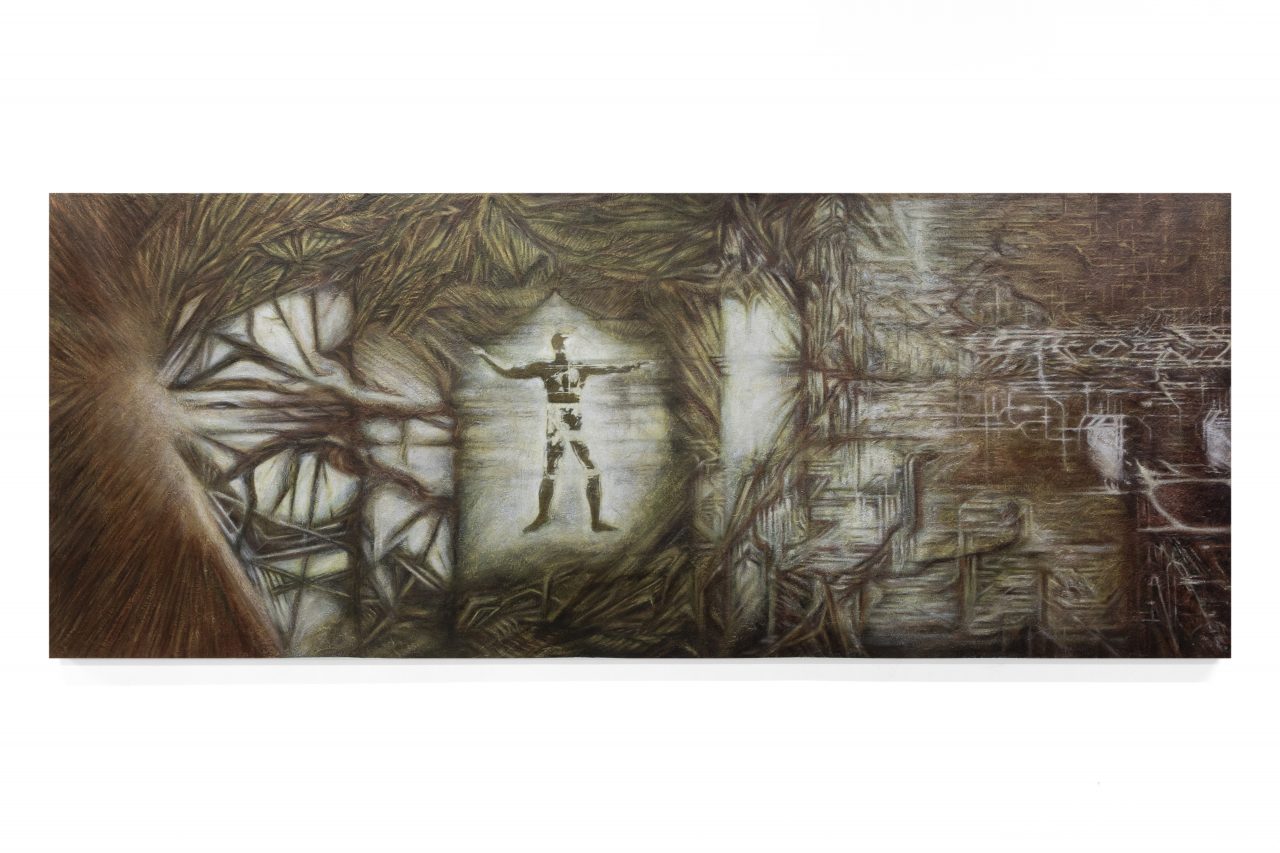نور
Raha Raissnia

Nour, 2022. 16mm film, wood, scrim, 3 mins. loop. Courtesy of the artist and Empty Gallery.

Nour, 2022. 16mm film, wood, scrim, 3 mins. loop. Courtesy of the artist and Empty Gallery.

Mycenaean Dream, 2022. Oil, acrylic medium and gesso on canvas. Courtesy of the artist and Empty Gallery.

Doric, 2022. Oil, acrylic medium and gesso on canvas. Courtesy of the artist and Empty Gallery.
Opening Reception: Saturday, December 10, 6 – 8PM
Empty Gallery is pleased to present نور, Iranian-American artist Raha Raissnia’s first solo exhibition in East Asia. Raissnia’s practice incorporates film, painting, and performance into a dense dialogical matrix. Layering and tweaking pre-existing material such as her own photographs, drawings, and film footage, Raissnia composes through replication, assemblage and erasure— drawing on a networked archive of modular elements existing across various media. Her idiosyncratic syntax of natural, architectural, and technological forms construct interior landscapes that traverse both past and present, memory and imagination, transient moments and the creeping accretion of time.
Drawing its title from a Persian word meaning light, نور (pronounced nour) brings together an interwoven constellation of recent paintings and moving image works installed across both floors of the gallery space. In the exhibition’s titular work, Raissnia projects a looped 16mm film of numinous architectural details onto a monumental cube-shaped floating screen. Composed of semi-transparent scrims, this hybrid film-sculpture expands the projection surface off of the wall in order to imbue Raissnia’s images with a spatialized and subtly aleatoric quality— extruding and multiplying the two-dimensional film frame into a complex imaginary space. A mobile abstraction composed of sheared metals, perforated surfaces, and filigreed veneers, Nour’s filmic material seems to mirror the geometry of the projection screen itself in an act of charged doubling. Challenging a merely scientistic or utilitarian conception of light, Raissnia engages the substance not only in its role as a source of illumination, but as an alchemical quantity that exceeds this supposed function— as an unruly generative principle, a creator of shadows and aberrations.
Raissnia’s process transmutes, or perhaps it would be better to say it explodes— in the diagrammatic sense of the term— the basic material of documentary reality. Beginning with photographic fragments from her personal archive, she manipulates these images through a recursive process of repetition, extraction and superimposition— feeding them through what might be conceptualized as a primitive circuit composed of multiple processes and devices. Subjected to this embodied feedback loop composed of the affectively charged interface between lenses and muscle fibers, photoreceptors and film printers, Raissnia’s materials become both amplified and distorted— carriers of noise as much as signal. The aura of direct observation and historical time is not so much stripped away as it is splintered, reflected into itself, and multiplied into something akin to a kaleidoscopic view of possible realities. Raissnia attempts to bring us not beyond, but rather around the indexical in order to catch a glimpse of an undifferentiated manifold— a process of potent re-mystification rather than de-mystification.
Drawn from the same personal archive of images, Raissnia’s paintings also partake of this transformative material process. Over the last two decades, she has continuously explored the tension between stillness and movement, representation and abstraction, crafting charged affective spaces that the writer Milton Cruz has referred to as “experiential modulations of a kind of organic living space of the mind”. In her hands, the plane of the canvas, traditionally associated with the freezing of time, becomes a paradoxically cinematic space animated by the energy and density of her mark-making. Works such as Tympanum and Doric inhabit an interstitial zone between figuration and abstraction, compressing multiple spatio-temporal instances into a single baroque construction. Within the expanse of these charged fields, recognizable motifs such as corridors, reliefs, and pylons seem to shudder in and out of perception. They are characterized by both a sense of looping internal movement and a facture which seems to approximate the formal language of experimental cinema in its deployment of painterly analogues for flickers, vibrations, and flares. Widescreen color compositions such as Scholiastic View are defined by the seething density and miniaturist detail of their linework, which seems to imbue their surfaces with a scintillating, vibratory quality. Populated by forms resembling synapses or electric circuits, these new works might be thought of as a kind of cybernetic arabesque, at once both futuristic and antediluvian.